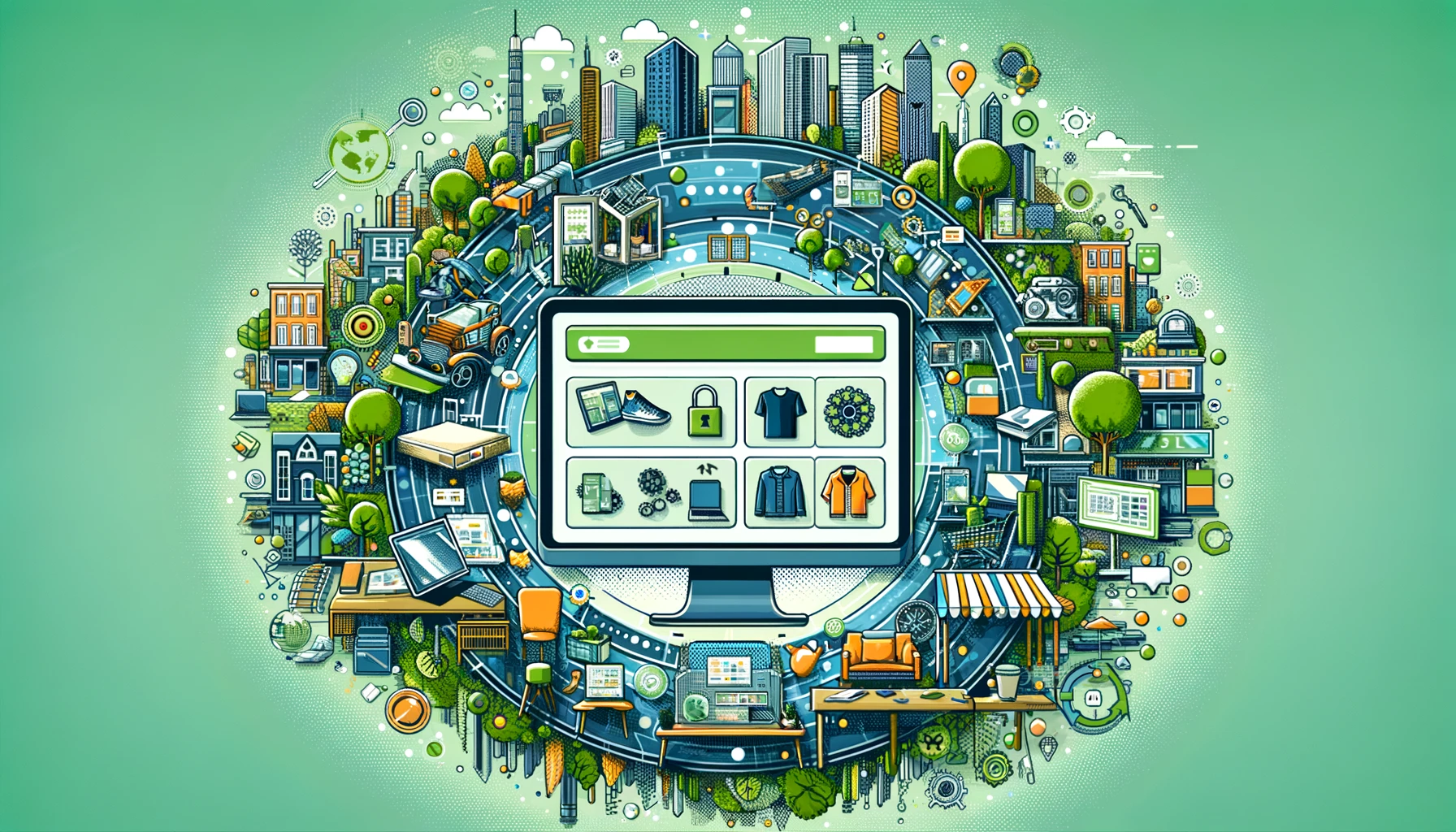The Rise of Circular Economy Marketplaces
The concept of circular marketplaces is now gaining momentum as a sustainable, innovative, and economically viable model. These digital platforms, becoming essential facilitators of the circular economy, differ significantly from traditional linear marketplaces' approach to product life cycles and resource utilization.
Understanding Circular Marketplaces
A circular economy marketplace is a digital platform that brings together buyers and sellers, focusing primarily on second-hand products, refurbished items, or goods designed for reuse. This model contrasts the linear economy's 'take, make, dispose' approach. Circular marketplaces aim to minimize waste and optimize resource usage by 'closing the loop' of product lifecycles through practices like reuse, recycling, and recovery.
The Role of Digital Platforms
Digital platforms in circular marketplaces have transformed how goods are bought and sold. They democratize commerce, making it more accessible and promoting the exchange of used goods, thereby inherently supporting the circular economy. By enabling the buying and selling of pre-owned items, these platforms reduce the demand for new goods, minimize waste, and consequently lessen the extraction of raw materials and energy used in manufacturing.
These types of circular marketplace platforms directly impact the reduction of carbon emissions and the overall environmental impact.
Examples of Circular Marketplaces
- eBay: Known for selling second-hand goods, eBay inherently promotes circularity by extending the life of products.
- ThredUp is an online consignment and thrift store for second-hand clothing addressing the waste issue in the fashion industry.
- Toyota Material Handling: It uses an online marketplace to sell used and refurbished equipment, reduce waste, and meet the demand for new production.
- The Renewal Workshop: Partners with brands to take their damaged or returned items, repair them, and sell them on their platform.
- Loop by TerraCycle: Offers products in reusable packaging, which is collected, cleaned, and refilled for reuse after use.
Business Models and Trends
The business model of a circular marketplace can vary, but it often involves recycling used or damaged products, reselling or renting second-hand products, and reducing storage costs. This model is gaining momentum among both individuals and professionals. For companies, launching a circular marketplace can improve brand image, reach new customers, generate new revenue streams, and contribute to more sustainable consumption.
Promising Outlook
The future of circular marketplaces looks promising due to several factors:
- Growing consumer awareness and preference for sustainable options.
- Increased regulatory pressures for companies to adopt more sustainable practices.
- The inherent economic benefits of extending product life cycles and reducing waste.
Conclusion
Circular marketplaces and their platform business models are emerging as significant forces in promoting sustainability and resource efficiency. As regulations related to a more circular way of doing business become more stringent, and our understanding of the circular economy evolves, the role of these platforms in driving sustainable development is only set to increase.
Integrating digital commerce with circular principles presents a promising prospect for businesses looking to align with modern environmental and economic sustainability goals.

